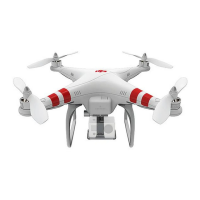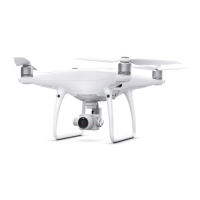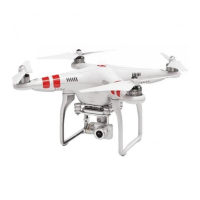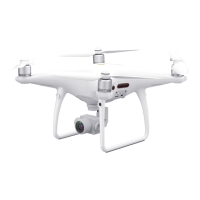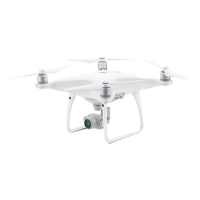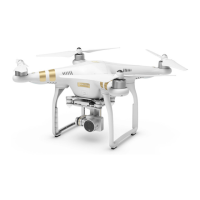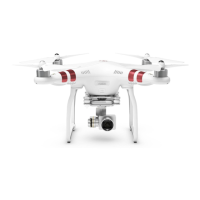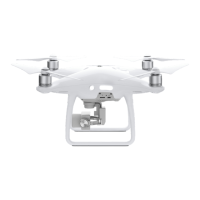P4 Multispectral User Manual
16
©
2019 DJI All Rights Reserved.
Precision Landing
The aircraft automatically scans and attempts to match the terrain features underneath during
Return to Home. When current terrain matches home point terrain, the aircraft will start landing
immediately to achieve precision landing.
When the Critical low battery level warning is triggered and the aircraft begins to land automatically,
push the left stick upward to make the aircraft hover at its current altitude, giving you an opportunity
to navigate to a more appropriate landing location.
The colored zones and markers on the battery level indicator bar reect the estimated remaining
ight time. They are automatically adjusted according to the aircraft’s current location and status.
The Low Battery Warning threshold set in the Aircraft Battery settings page in the app is only for an
alert and will not trigger RTH.
The aircraft cannot avoid obstruction during RTH when the Forward
Vision System is disabled. Users can use the remote controller to
control aircraft altitude and speed. It is important to set a suitable
Failsafe altitude before each flight. Go to Camera View in DJI
GS Pro, tap the text under the Smart RTH button to set an RTH
altitude.
20m
If the aircraft is ying under 65 feet (20 meters) and RTH (including
Smart RTH, Low Battery RTH and Failsafe RTH) is triggered, the
aircraft will rst automatically ascend to 65 feet (20 meters) from the
current altitude. You can only cancel the ascending by exiting the RTH.
5m
H
The aircraft will automatically descend and land if RTH is triggered
when the aircraft ies within a 16-feet (5 meters) radius of the Home
Point and when the aircraft altitude is under 98 feet (30 meters), or
if the obstacle sensing function is disabled. The aircraft will not as-
cend, and will land immediately at the current location.
RTH Safety Notices
Landing Protection is active during precision landing.
Precision Landing performance is subject to the following conditions:
a) Home point is recorded upon take o, and cannot not be refreshed during ight.
b
)
Aircraft must take o vertically. Take o altitude must be greater than 7 meters.
c
)
Home point terrain features remain largely unchanged.
d
)
Home point terrain with no distinctive features will aect the performance.
e
)
Lighting conditions cannot be too light nor too dark.
The following actions are available during landing:
a
)
Pull throttle down to accelerate landing.
b
)
Moving the control sticks in any other direction will stop Precision Landing. The aircraft will descend
vertically and Landing Protection will remain active.
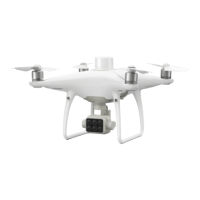
